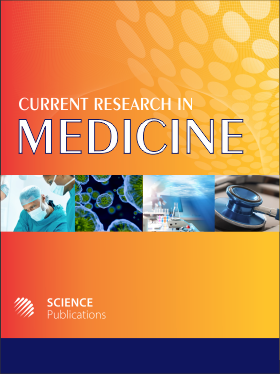Hepatotoxicity Due to Histamine Trifluoro-Methyl Toluidide, Amthamine, R-(-)-α-Methyl Histamine and Clobenpropit (H1R-H4R-Agonists, Respectively) in Rabbit Experimental Model
- 1 Aligarh Muslim University, India
- 2 Chhatrapati Shahuji Maharaj Medical University, India
Abstract
Problem statement: Since in vivo studies looking for toxicological impact of histamine receptors-agonists in experimental models are fragmentary, the present study was designed to delineate the histopathological and biochemical changes in livers of rabbits treated with histamine receptors (H1R-H4R)-agonists. Approach: The cohort comprised of six groups (Group I control and Group II-VI treated) containing five rabbits each. Control-group received vehicle (sterile distilled water) and treated groups received subcutaneous histamine (100 µg kg-1 × b.i.d.) and H1R-agonist (HTMT dimaleate), H2R-agonist (amthamine dihydrobromide), H3R-agonist (R-(-)-α-methylhistamine dihydrobromide) and H4R-agonist (clobenpropit dihydrobromide) each in a dose of 10 µg kg-1 × b.i.d. Hepatotoxicity due to these agonists analyzed by using histopathological and biochemical methods. Results: Rabbits treated with drugs in group II-VI had significant elevated levels of serum enzymes (alanine aminotransferase (ALT), aspartate aminotransferase (AST), alkaline phosphatase and bilirubin) (p<0.05). Histopathological examination revealed hepatic congestion (by histamine and H2R-agonist), centrilobular necrosis (H1R-agonist), increasing degree of binuclearity (in H4R-agonist) and rather unusual multinuclearity (in H2R-and H3R-agonist) of hepatocytes and Kupffer cell prominence (in H4R-agonist) constituted the hallmark of the injuries produced by short-term treatment by histamine and its agonists as compared to control group. Conclusion: These results provided evidence that histamine receptors on induction via their specific-agonist produce specific pattern of hepatic congestion, hepatocyte necrosis and polyploidy and Kupffer cell prominence.
DOI: https://doi.org/10.3844/amjsp.2010.1.7

- 7,214 Views
- 4,597 Downloads
- 5 Citations
Download
Keywords
- Histamine
- histamine receptors-agonists
- liver histopathology
- hepatotoxicity
- polypoidy
- kupffer cells
